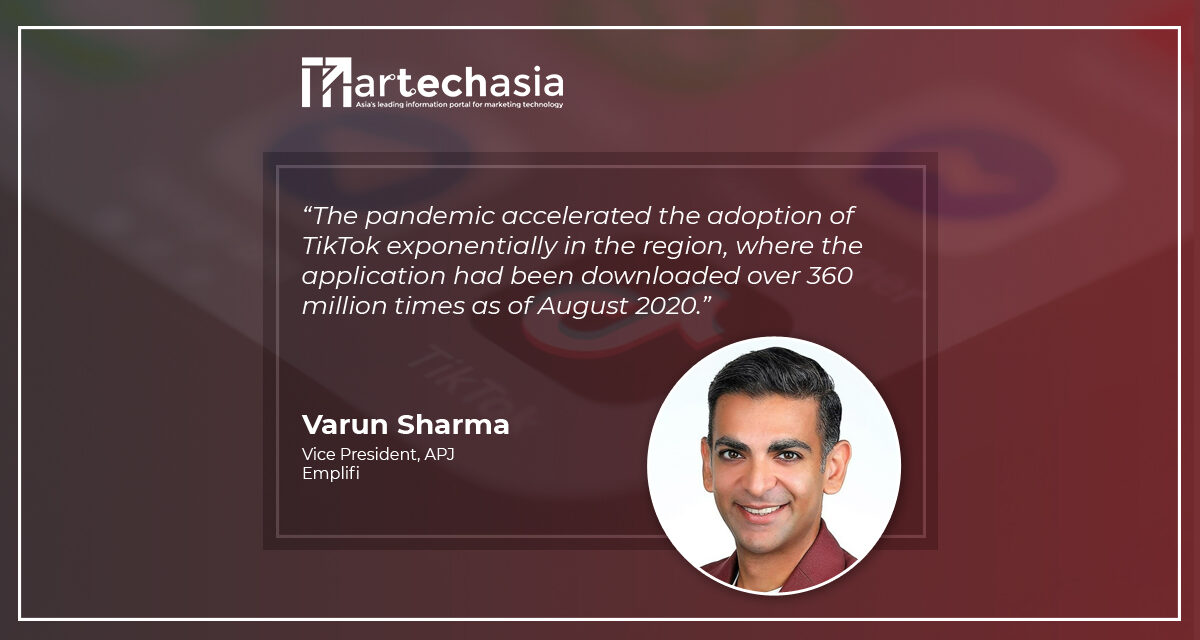Here is why TikTok influencers matter and how you can get the best of the platform for your brand.
TikTok recently made headlines with the announcement of their 1 billion monthly active user milestone. That’s massive growth for a platform that hit the scene as recently as 2016, especially in Southeast Asia (SEA) which saw an 85% y-o-y user base growth, accounting for one in four global users in 2021.
The pandemic accelerated the adoption of TikTok exponentially in the region, where the application had been downloaded over 360 million times as of August 2020. Interestingly, the platform is attracting new audience segments and content creators such as the senior population, politicians and ministries. For example, Malaysia’s former prime minister, Dr. Mahathir joined TikTok at the age of 95 to connect with a younger audience. Similarly, Singapore’s Finance Minister Lawrence Wong also uses TikTok to stay close to the nation’s youth – with 6,962 followers and this number is expected to increase as the platform becomes the go-to place for quick bites of information.
This corroborates the effectiveness of influencer marketing to reach targeted audiences and to spark discussion and action.
Talking from a brand’s perspective, Instagram has been the go-to platform for influencer collaborations. But with the growing popularity of TikTok, marketers can now get creative working with new voices and more importantly, reaching new audiences. Here’s how you can get the best of the platform for your brand:
Value in Going Viral
Unlike most social platforms that offer likes, comments, and shares, TikTok promotes a host of sharing options, including stitches, duets, creating, saving, reusing original audio, and of course, challenges. These platform engagement features make it easier for influencers and brands to leverage user-generated content, leading to successful influencer collaborations.
During the pandemic, the platform proved particularly beneficial for small-medium businesses, which represent 97% of businesses in Southeast Asia. For example, an Indonesian beauty brand, Dear Me Beauty, launched an In-feed campaign on TikTok, working with popular influencers to use and review their products. The campaign helped the brand reach more than 7.2 million users and saw a 60% sales increase during the campaign period.
Leading e-commerce brands such as Shopee and Zalora have also benefited from TikTok, achieving lower cost per acquisition and higher click through rates.
Instagram vs. TikTok Influencers
When it comes to influencer marketing campaigns, 68% of brands consider Instagram to be the most important platform. However, in 2021, TikTok ranked first alongside Facebook globally (19.6 hours) and third in Singapore (16.4 hours) surpassing Instagram in terms of user engagement – hours spent per user monthly.
TikTok and Instagram are not at odds with each other. Having a variety of influencers to collaborate with is healthy for brands, users, and even the platforms themselves. By being selective of which platforms to use for campaigns, marketers can see even better results.
In fact, in that same survey it was found that 45% of brands are turning to TikTok.
Here are some of the main advantages brands can benefit from when opting for a TikTok influencer campaign:
- Sound selection: TikTok has its own massive audio library, which includes original tracks, hit songs, and even comedy sketches. Influencers can select their own audio, edit, and publish within minutes – all from a mobile device.
- Authenticity: Most Instagram content is focused on style and imagery, so it is often edited using professional software for a more polished effect. Meanwhile, TikTok content is more likely to have a rawer approach, allowing the creator’s personality to really shine through.
- Audience size: In 2020, TikTok influencers with 1,000 to 5,000 followers made up 53.5% of TikTok influencer accounts worldwide, 54% of Instagram influencers have between 1,000 and 10,000 followers.
- Video content: Instagram focuses its aesthetic on a “grid” style. The app feeds certain posts in such a way that users see more than one post at a time. By contrast, TikTok recommends content one video at a time, which encourages users to watch the video in its entirety and increases impressions.
TikTok a Key Path of the Customer Journey
“TikTok made me buy it,” has become a common phrase as a result of countless influencers who have discussed their favorite products. Brands are increasingly looking at commerce shops on the platform. According to a study, TikTokers are 1.5 times more likely to purchase a product that they discovered on the platform compared to other platform users. In Indonesia, 90% of TikTok users follow calls to action from videos of products they like. While in Malaysia, 52% of users learn about new products via brand video ads on TikTok.
Identifying the Ideal Influencer
When it comes to influencer marketing, bigger isn’t always better. In fact, micro-influencers “boast up to a 60% increased engagement rate compared to macro-influencers” on TikTok. But it’s not just more engagement, it’s real ROI.
But whether or not you choose to go macro or micro, there is no guarantee your content will make it on the main feed. Interestingly, TikTok’s algorithm doesn’t give priority to users with higher follower counts and instead favors content by their video completion rates. As a result, influencers of all sizes have an equal chance in achieving massive reach. It truly comes down to quality and relevance of the content.
TikTok Influencers Can Connect you with New, Engaged Audiences
Although TikTok influencer marketing is still in its infancy stages, marketers see big potential in the platform. However, as with any social platform, the recipe to success lies in the mix between engaging branded content and impactful influencer relationships. If a brand is able to partner with influencers who can slide into their followers’ feed in an engaging a seamless way, they will have a much better chance of building audience engagement and trust over time.



















